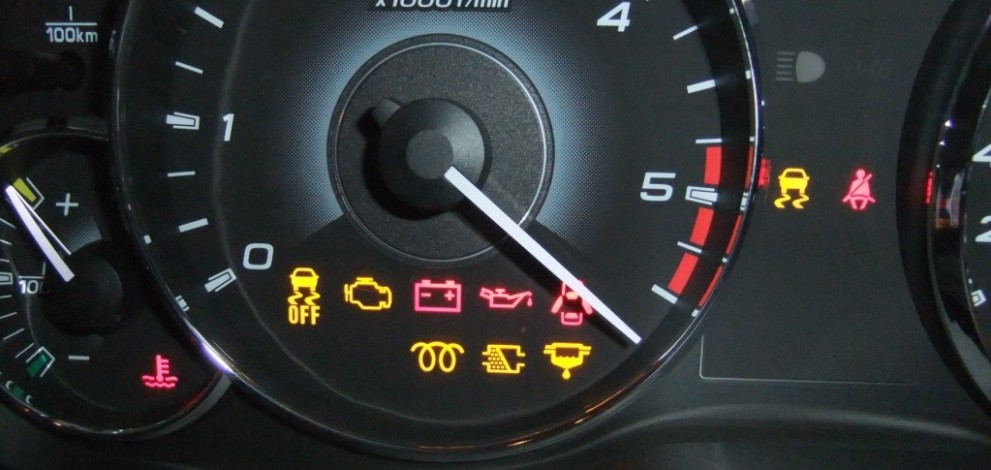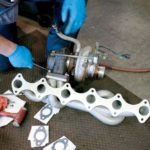Summer is finally here.
And with summer comes hot, hot heat.
If you want to be sure that your dear offroader, muscle car, or daily driver is not going to suffer a slow, fiery…nightmare, make sure your cooling system is working as it should be.
How?
Open up the cold beverage of your choice, and run these simple checks.
CHECK COOLANT LEVELS & ANTIFREEZE STRENGTH

I’ll start you off with the basics.
Make sure that you have enough coolant in your cooling system.
If your vehicle has a coolant expansion tank, remove its cap and take a look inside. If your water-antifreeze mixture is below the mark, you know what to do… fill up.
Some vehicles don’t have an expansion tank, or they do but the tank does not have a removable cap.
If this is your case, you need to remove your radiator cap to check your coolant levels.
And this requires a few precautions.
The most important one is to never, never remove the cap if your engine is hot. If you do, you risk injury from boiling coolant and steam shooting up at you from the filler neck.
On a cool engine, release any built up pressure by pressing down on the cap and turning it towards the safety stop. Wait a few seconds before completely removing the cap.
Again, if the coolant mixture is below the mark, fill up!
But before you cap off, draw up a small amount of coolant with the help of a hydrometer.
The device will display your antifreeze strength.
And why should you care?
Antifreeze is multi-functional and vital to the proper operation of the engine. It works to prevent corrosion, transfer heat, protect from freezing, and prevent any scale build up.
And if your antifreeze concentration isn’t strong enough, you should address it.
CHECK THE THERMOSTAT

The cooling system’s thermostat sits between the engine and the radiator. Its job is to block coolant from the engine when the engine is cold.
But when the engine heats up and reaches its operating temperature of around 200 degrees Fahrenheit, the thermostat opens up to let coolant pass through.
In this way it decreases engine wear, deposits and harmful emissions.
To test if it’s working as it should, heat up a coolant solution to about 25 degrees Fahrenheit over the temperature stamped on the thermostat.
Submerge the thermostat - it should open up.
Now allow the solution to cool down to about 10 degrees Fahrenheit below the temperature stamped on the thermostat.
Submerge the thermostat - it should close.
And if your thermostat fails one or both tests, you need to replace it.
CHECK FOR LEAKS

Examine all cooling system connections to make sure they are tight.
Check your hoses by squeezing them. They should be difficult to collapse.
If any hoses are soft, worn, rotted or oddly swollen you need to replace them. Otherwise air could find its way inside of your system.
It’s trickier to diagnose if exhaust gases are leaking into your cooling system.
In most cases, these leaks happen because of a defective head gasket. And if these harmful gases leak into your system, they can corrode its components and even your radiator.
You can check for exhaust leaks with the help of an exhaust gas analyzer. Remove the expansion tank cap or radiator cap and hold the analyzer probe directly above the filler neck.
Do not submerge the probe in the coolant!
The analyzer will inform you if it detects any exhaust gases.
Perform a pressure test to find out if there are any other leaks in your cooling system using a radiator pressure tester.
Use the same tester and a special adapter to check if your radiator cap is able to hold its rated pressure. If not, it’s loosing coolant. And eventually, your engine will begin to overheat.
If the cap is worn you should replace it.
CHECK THE DRIVE BELT

The water pump and drive belt circulate the coolant inside of your coolant system by drawing it away from the radiator and pushing it into the engine block.
It’s important to check both components for any wear or tension.
If your drive belt has loosened, the pump won’t be able to turn quickly enough to achieve an optimal circulation of coolant. What could also become a problem is your alternator not turning quickly enough to keep the battery charged.
If you’re testing a V-belt, make sure the engine is turned off.
Take the V-belt and twist it between your fingers. Inspect if for any cracking, glazing, tearing, or grease. If any symptoms suggest that it’s worn, you should replace it. If your system is equipped with 2 V-belts, but only one is worn out – replace both.
This will guarantee proper operation and consistent wear in the future.
If you’re testing a serpentine belt, inspect it for fraying, glazing or other signs of wear.
Also check its belt tensioner for wear. Regardless of the condition you find it in, a good rule of thumb is to replace it once your engine reaches 150,000 km.








